Bold and Elegant: Exploring Black and White Art
Welcome to the enchanting realm of black and white art, where every stroke, shadow, and highlight tells a story steeped in history and emotion. This captivating form of artistry strips away the complexities of color, allowing the raw essence of creativity to shine through. Imagine stepping into a world where contrasts reign supreme, where the absence of color enhances the beauty of form, texture, and composition. It's like watching a classic film in black and white; the absence of color invites you to focus on the intricacies of the plot, the depth of the characters, and the subtle nuances that might otherwise fade into the background.
From the ancient cave paintings that adorned the walls of our ancestors' shelters to the modern masterpieces of today, black and white art has undergone a remarkable evolution. It has been a vehicle for expression, a means to convey profound ideas, and a canvas for exploring the depths of human emotion. Artists have long been captivated by the interplay of light and shadow, using these elements to evoke feelings that color alone sometimes cannot achieve. In this article, we will journey through the history, techniques, and cultural significance of monochrome art, revealing how it continues to captivate audiences around the globe.
As we delve deeper into this artistic world, consider the different mediums that artists utilize to create their masterpieces. Whether it's the bold lines of ink drawing, the soft smudges of charcoal, or the crisp precision of digital manipulation, each technique brings its own unique voice to the conversation. The beauty of black and white art lies not just in its aesthetic appeal, but in its ability to communicate complex emotions and ideas through simplicity. So, are you ready to explore the profound depths of this monochrome universe? Let’s embark on this artistic adventure together!
Exploring the origins of black and white art, this section highlights its evolution from early cave paintings to modern artistic movements, showcasing how monochrome has shaped artistic expression throughout history.
This section discusses various techniques employed in black and white art, including ink drawing, charcoal sketching, and digital manipulation, emphasizing how each method contributes to the overall aesthetic and emotional impact.
Focusing on ink drawing, this part examines traditional and contemporary approaches, detailing tools and styles that artists use to create striking black and white compositions.
This subsection dives into the different brush techniques used in ink drawing, explaining how varying pressure and strokes can create texture and depth in monochrome art.
Here, we explore various pen and ink styles, such as cross-hatching and stippling, that artists utilize to convey detail and contrast in their black and white works.
This section covers the use of charcoal and pencil in creating monochrome art, highlighting the unique qualities of these mediums and how they enhance the emotional resonance of the artwork.
Contrast is a crucial element in black and white art. This section analyzes how artists manipulate light and shadow to create drama, mood, and visual interest in their pieces.
Focusing on the interplay of light and shadow, this part explains how artists use these elements to guide the viewer's eye and evoke specific emotions in their artwork.
This subsection discusses how texture and depth are achieved in black and white art, revealing techniques that artists employ to create a sense of three-dimensionality and richness in their compositions.
Examining the impact of black and white art on contemporary culture, this section highlights its resurgence in various forms, including photography, graphic design, and fashion, showcasing its enduring appeal and relevance.
- What is black and white art? Black and white art refers to artistic works that utilize only shades of black, white, and gray, focusing on contrast and composition rather than color.
- Why is black and white art significant? This form of art emphasizes texture, form, and emotional depth, allowing viewers to engage with the artwork on a more profound level.
- What techniques are commonly used in black and white art? Techniques include ink drawing, charcoal sketching, and digital manipulation, each offering unique ways to create depth and emotion.
- How has black and white art influenced modern culture? Black and white art continues to inspire contemporary photography, graphic design, and fashion, proving its timeless relevance in the art world.

The History of Black and White Art
Black and white art has a rich and fascinating history that stretches back to the dawn of human creativity. From the earliest cave paintings, where primitive artists used charcoal and natural pigments to depict their surroundings, to modern masterpieces that challenge our perceptions, monochrome artistry has always held a special place in the hearts of creators and audiences alike. The simplicity of black and white allows for a focus on form, texture, and contrast, stripping away the distractions of color and inviting viewers to engage with the work on a deeper level.
As we journey through time, we find that black and white art has evolved significantly, influenced by cultural shifts and technological advancements. In ancient civilizations, monochrome was often used in pottery and sculpture, where artists would emphasize shapes and shadows. The Renaissance brought about a renewed interest in realism, leading artists to experiment with chiaroscuro techniques—using strong contrasts between light and dark to create a three-dimensional effect. This period marked a significant turning point, as artists like Caravaggio and Rembrandt mastered the play of light and shadow, paving the way for future generations.
Fast forward to the 19th century, and we see the rise of photography—an art form that initially relied heavily on black and white. The invention of the daguerreotype in 1839 revolutionized the way we capture moments, and photographers like Ansel Adams later pushed the boundaries of monochrome imagery, using contrast and texture to create stunning landscapes. This era solidified black and white as a legitimate and powerful medium for artistic expression.
In the 20th century, movements such as Abstract Expressionism and Minimalism further embraced the power of black and white. Artists like Kazimir Malevich and Piet Mondrian stripped their works down to the essentials, using monochrome palettes to evoke emotion and provoke thought. The absence of color became a statement, challenging viewers to reconsider their perceptions of beauty and art. Today, black and white art continues to thrive, with contemporary artists exploring new techniques and technologies, from digital manipulation to mixed media, all while honoring the rich history that precedes them.
As we look at the evolution of black and white art, it’s clear that this timeless form of expression is not just about the absence of color; it’s about the profound depth and emotional resonance that can be achieved through contrast, texture, and form. Whether through traditional methods or modern innovations, black and white art remains a captivating and essential part of the artistic landscape.
- What is the significance of black and white art? Black and white art emphasizes contrast, form, and texture, allowing viewers to engage with the emotional depth of the artwork without the distraction of color.
- Who are some famous black and white artists? Notable artists include Ansel Adams, Rembrandt, and contemporary figures like Yayoi Kusama and Banksy, all of whom have utilized monochrome effectively in their work.
- How has technology influenced black and white art? Technology has expanded the possibilities for black and white art through digital manipulation, photography, and new mediums, allowing artists to explore and innovate in ways that were previously unimaginable.
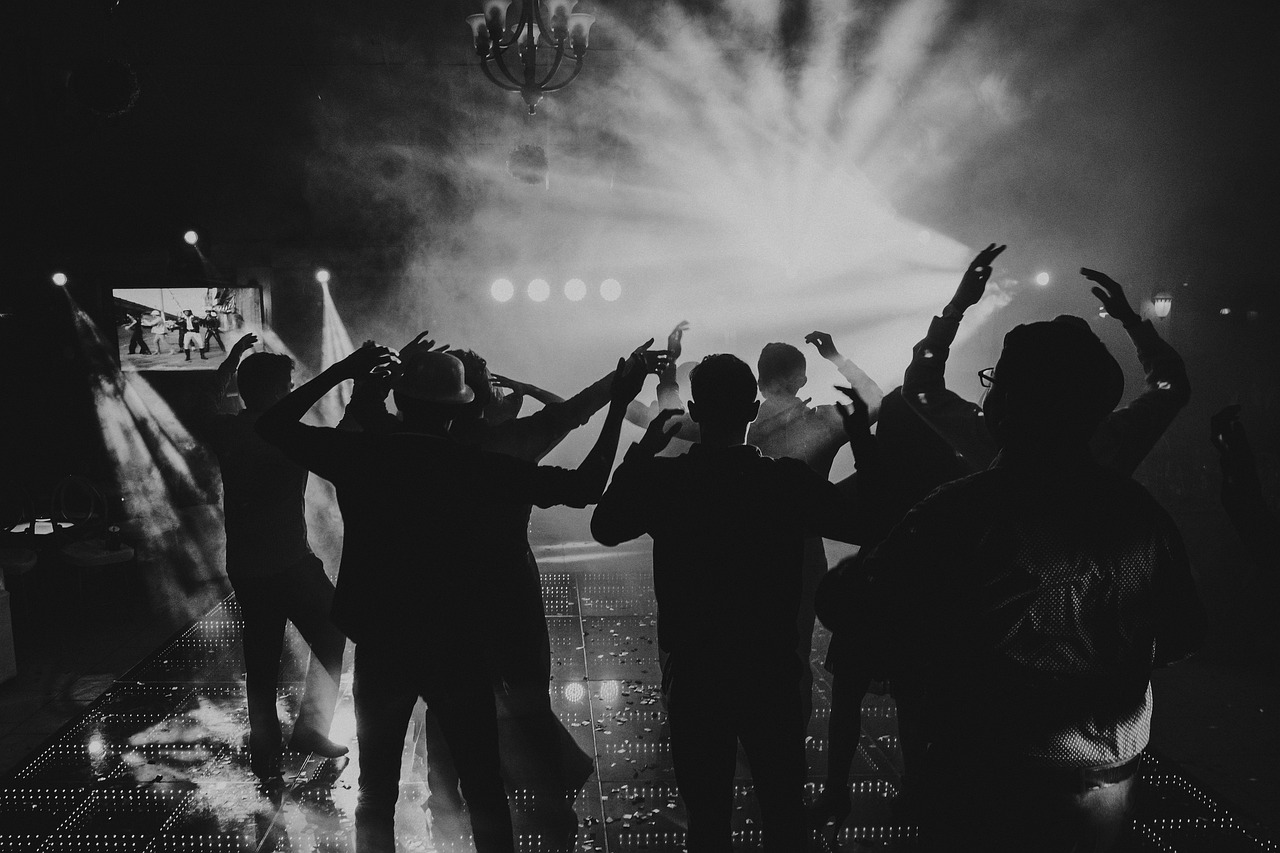
Techniques in Monochrome Art
When it comes to the captivating realm of monochrome art, the techniques employed are as diverse as the emotions they evoke. Artists have long harnessed the power of black and white to convey depth, contrast, and a myriad of feelings. From the delicate strokes of ink to the bold smudges of charcoal, each technique offers a unique way to express creativity. The beauty of monochrome art lies not just in its simplicity, but in its ability to communicate complex ideas without the distraction of color.
One of the most prominent techniques in black and white art is ink drawing. This method allows artists to create striking compositions using a variety of tools, each contributing to the final piece's aesthetic. The choice of ink can range from traditional black ink to colored inks that still maintain a monochromatic feel. Artists often experiment with different styles and tools, such as brushes, pens, and even their fingers, to achieve the desired effect. The beauty of ink drawing is that it can be both precise and fluid, allowing for a range of expressions from detailed illustrations to abstract forms.
Delving deeper into ink drawing, we find a wealth of methods that artists utilize. Traditional techniques such as brushwork and pen and ink styles play a significant role in defining the character of a piece. For instance, brush techniques can create a sense of movement and flow, while pen styles like cross-hatching and stippling offer intricate detail and texture. Each method not only affects the visual outcome but also the emotional resonance of the artwork. Artists often choose their tools based on the mood they wish to convey—soft brushes for gentle, flowing lines, or sharp pens for bold, defined contrasts.
Brush techniques in ink drawing are fascinating because they allow for a dynamic range of expression. By varying the pressure applied to the brush, artists can create textures that mimic the natural world or abstract concepts. For example, a light touch may produce delicate lines, while a heavier stroke can result in bold, dramatic marks. This versatility makes brushes a favorite among artists looking to explore the full potential of black and white compositions.
On the other hand, pen and ink styles like cross-hatching and stippling provide artists with tools to build depth and contrast meticulously. Cross-hatching involves layering lines in different directions to create shading and volume, which can transform a flat image into a three-dimensional illusion. Stippling, with its tiny dots, offers a softer, more gradual transition between light and dark, often resulting in a more organic feel. These techniques require patience and precision but can yield stunning results that draw the viewer into the artwork.
Besides ink, charcoal and pencil are also essential mediums in monochrome art. Charcoal, with its rich, velvety texture, allows for dramatic contrasts and expressive strokes. Artists can smudge and blend charcoal to create soft gradients, enhancing the emotional depth of their work. Similarly, pencil techniques offer a different kind of finesse, enabling artists to achieve detailed lines and subtle shading. The unique qualities of these mediums enhance the overall impact of monochrome art, allowing for a range of emotional expressions—from stark and haunting to soft and contemplative.
In conclusion, the techniques in monochrome art are as varied as the artists who use them. Whether through the fluidity of ink drawing or the boldness of charcoal, each method contributes to the rich tapestry of black and white artistry. The beauty of these techniques lies in their ability to evoke emotion and provoke thought, proving that sometimes, less truly is more.
- What is monochrome art? Monochrome art refers to artworks created using a single color or shades of a single color, often focusing on the interplay of light and shadow.
- What materials are commonly used in black and white art? Common materials include ink, charcoal, graphite pencils, and various types of paper.
- How does contrast affect monochrome art? Contrast plays a crucial role by enhancing visual interest and emotional impact, guiding the viewer's eye through the artwork.
- Can monochrome art be modern? Absolutely! Monochrome art continues to thrive in contemporary culture, influencing photography, graphic design, and fashion.
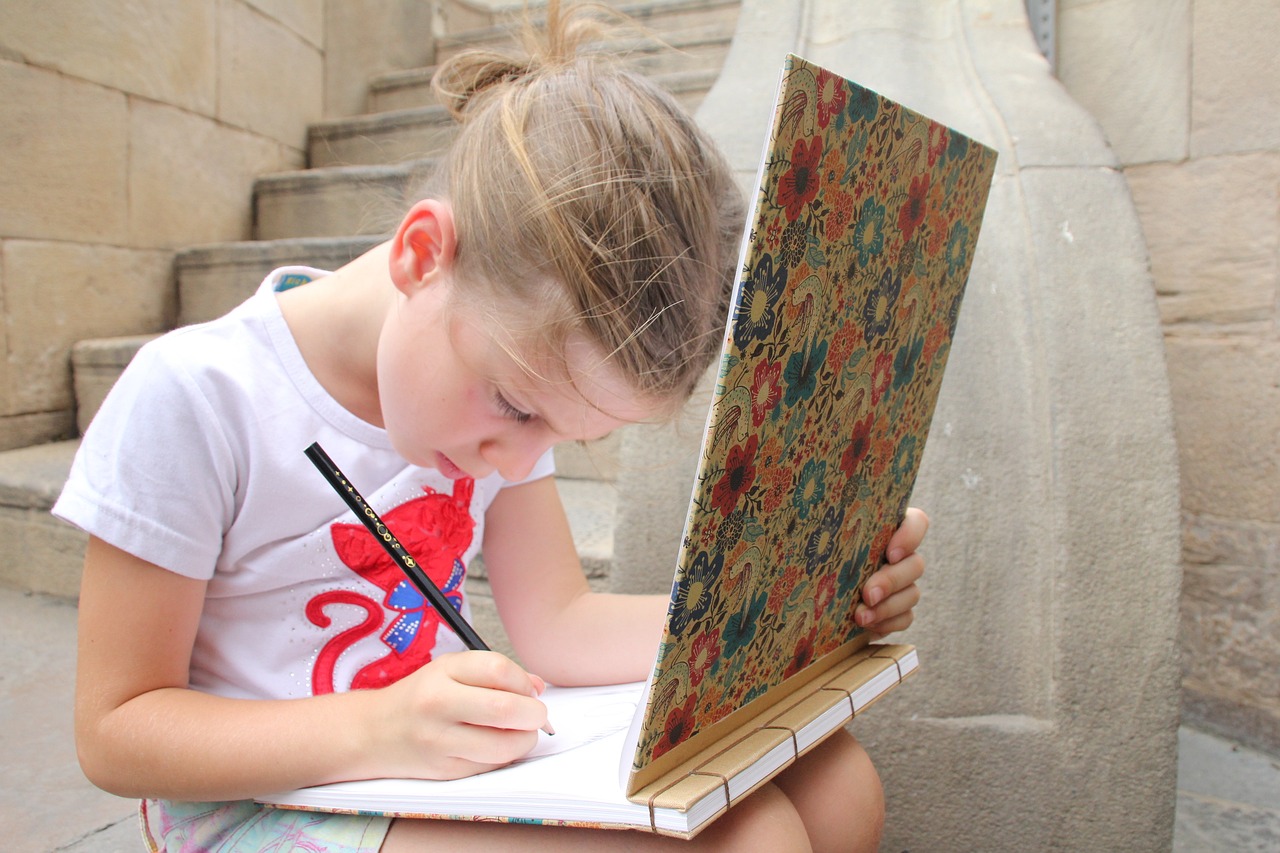
Ink Drawing Methods
Ink drawing is a fascinating and versatile medium that has captivated artists for centuries. The beauty of ink lies in its ability to create striking visuals with a limited palette, allowing for a profound exploration of contrast and detail. Artists often employ a variety of techniques to bring their visions to life, each offering unique qualities that enhance the overall impact of the artwork. From traditional methods to modern innovations, the world of ink drawing is rich with possibilities.
One of the most essential aspects of ink drawing is understanding the tools available. Artists typically use a range of instruments, including brushes, pens, and even quills, to achieve different effects. Each tool can dramatically change the outcome of a piece, allowing for a broad spectrum of styles and expressions. For example, a fine-tipped pen can create intricate details, while a brush can deliver bold strokes and washes that evoke emotion and movement.
Among the popular methods in ink drawing, brush techniques stand out for their fluidity and expressive potential. Artists can manipulate the pressure and angle of the brush to create varying line weights and textures. This technique allows for a dynamic range of expression, from soft, delicate lines to bold, sweeping gestures. The beauty of using a brush is that it can mimic the organic qualities of nature, making it a favorite among landscape and abstract artists alike.
On the other hand, pen and ink styles offer a different approach, focusing on precision and detail. Techniques such as cross-hatching and stippling are commonly used to build depth and contrast. Cross-hatching involves drawing intersecting lines to create shading, while stippling uses dots to achieve a similar effect. These methods require patience and skill, as they demand a keen eye for detail and a steady hand. The result is often a mesmerizing interplay of light and shadow that can draw viewers into the artwork.
To further illustrate the variety of ink drawing methods, consider the following table that summarizes some common techniques and their characteristics:
| Technique | Description | Common Tools |
|---|---|---|
| Brush Techniques | Fluid strokes that create texture and depth. | Brush, Ink |
| Cross-Hatching | Intersecting lines used for shading and depth. | Fine-tipped Pen |
| Stippling | Dot-based technique for creating texture and light. | Technical Pen |
In conclusion, the methods of ink drawing are as diverse as the artists who wield them. Whether one prefers the fluidity of brushwork or the precision of pen techniques, each method offers a unique way to express creativity and emotion. The beauty of black and white art, particularly through ink drawing, lies in its ability to convey complex ideas and feelings using just two colors. As artists continue to experiment and innovate, the world of ink drawing will undoubtedly evolve, inspiring future generations to explore its depths.
- What are the best inks for drawing? - There are many options, but India ink and acrylic ink are popular choices due to their rich pigmentation and permanence.
- Can I use watercolor brushes for ink drawing? - Yes, watercolor brushes can be used for ink drawing, but the effects may differ from traditional ink brushes.
- How can I improve my ink drawing skills? - Practice regularly, study the techniques of other artists, and experiment with different tools and styles.
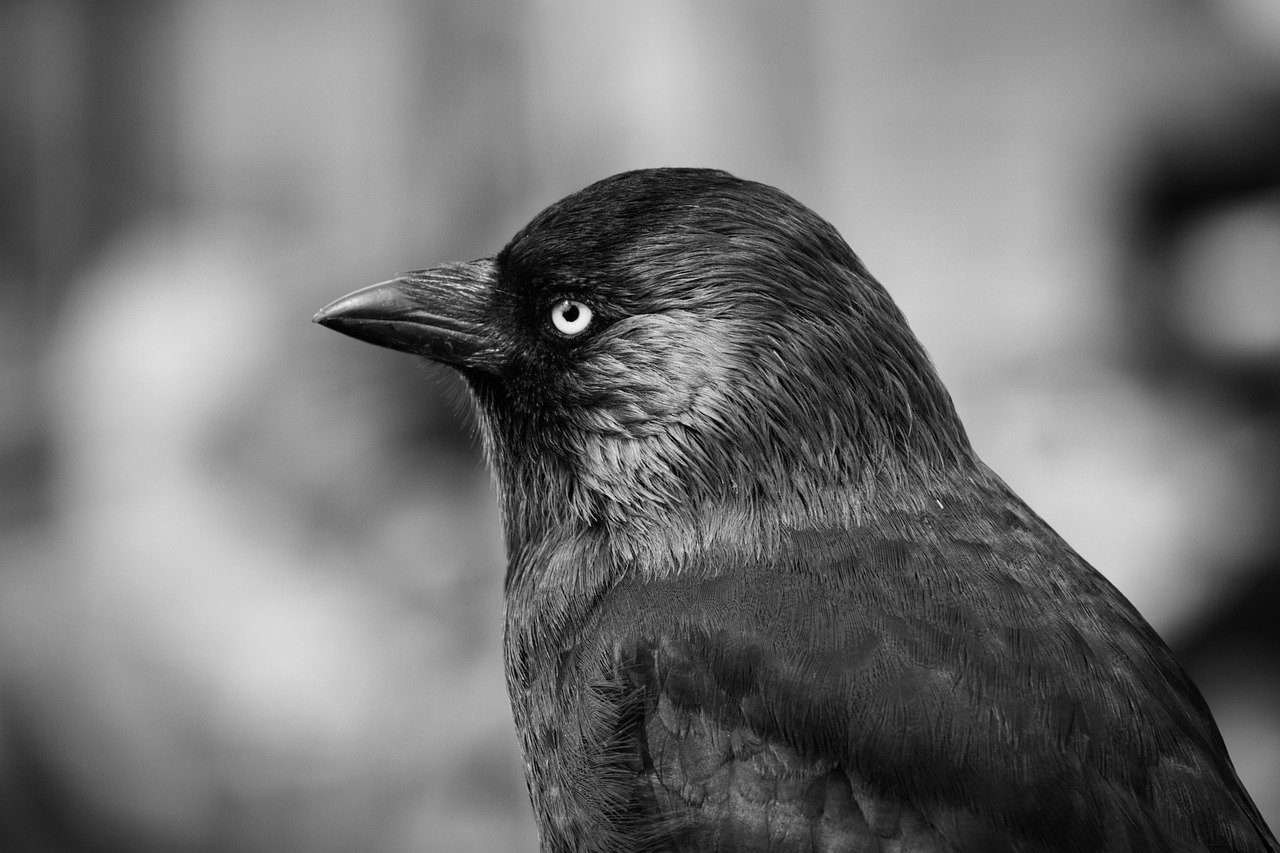
Brush Techniques
Brush techniques in black and white art are like the secret ingredients in a chef's recipe; they can transform a simple dish into a culinary masterpiece. When it comes to monochrome artistry, the way an artist wields their brush can significantly impact the texture, depth, and overall emotion of the piece. Artists often experiment with different brush sizes and shapes to achieve various effects, making each stroke a unique expression of their vision.
One of the most fascinating aspects of brush techniques is the interplay between pressure and stroke. For instance, a gentle touch can create soft, delicate lines that evoke a sense of calm, while a firmer grip can produce bold, dramatic strokes that command attention. This dynamic allows artists to manipulate the viewer's emotions, guiding them through the artwork as if they were on a journey. Imagine walking through a forest where the light filters through the leaves; the contrast between light and shadow created by varied brush techniques can evoke similar feelings of wonder and intrigue.
Moreover, artists often use techniques such as dry brushing and wet-on-wet to create distinct textures. Dry brushing involves using a dry brush with minimal paint to produce a rough, scratchy effect, perfect for depicting rugged landscapes or worn textures. On the other hand, the wet-on-wet technique allows for smoother transitions and blending, ideal for capturing the subtle nuances of light and shadow. By mastering these techniques, artists can add layers of meaning and complexity to their work, inviting viewers to look deeper.
To illustrate the variety of brush techniques, let’s take a look at some common methods used in black and white art:
| Technique | Description | Effect |
|---|---|---|
| Dry Brushing | Using a dry brush with minimal paint. | Creates a rough texture, ideal for landscapes. |
| Wet-on-Wet | Applying wet paint on wet surfaces. | Allows for smooth blending and soft edges. |
| Scumbling | Applying a thin layer of paint with a dry brush. | Creates a textured, broken color effect. |
| Stippling | Using a brush to create dots or small strokes. | Conveys detail and can build up tonal variation. |
In conclusion, mastering brush techniques is essential for any artist looking to make their mark in the world of black and white art. The ability to manipulate a brush with intention not only enhances the aesthetic appeal of the artwork but also deepens the emotional connection between the piece and its audience. Next time you admire a monochrome masterpiece, take a moment to appreciate the brushwork behind it; it’s a dance of creativity that brings the artwork to life.
- What materials do artists use for brush techniques in black and white art? Artists typically use a variety of brushes, inks, and paints, including watercolor and acrylic.
- Can I use regular paintbrushes for black and white art? Absolutely! While specialized brushes can enhance the effect, regular paintbrushes work just fine.
- How can I improve my brush techniques? Practice is key! Experiment with different brushes and techniques to find your unique style.

Pen and Ink Styles
When it comes to , the possibilities are as limitless as the imagination itself. Artists have been using these techniques for centuries, and each method brings its own unique flair to monochrome art. Two of the most popular styles that stand out in this realm are cross-hatching and stippling. These techniques not only define the visual impact of a piece but also allow artists to convey intricate details and dramatic contrasts.
Cross-hatching involves the use of parallel lines that cross each other to create varying degrees of shading and texture. Imagine a woven fabric; the more lines you add, the richer the texture becomes. This technique is particularly effective for depicting light and shadow, giving depth to an otherwise flat surface. Artists often experiment with the density and angle of their lines to achieve different effects. For instance, a tighter cross-hatch can create a darker area, while more spaced lines can suggest lighter tones.
On the other hand, stippling relies on the strategic placement of dots to form images. It’s akin to a pointillist painting but in the realm of ink. This technique requires patience and precision, as the density of the dots determines the shading and detail. The beauty of stippling lies in its ability to create soft gradients and intricate patterns that draw the viewer in. An artist might spend hours, even days, meticulously placing each dot to achieve the desired effect, resulting in a stunning visual that often appears to shimmer from a distance.
In addition to these styles, artists often blend techniques to create unique effects. For example, using stippling for the background while employing cross-hatching for the foreground can create a striking contrast that guides the viewer's eye. This interplay between different styles not only enhances the artwork but also allows the artist to express their individual voice.
Ultimately, the choice of pen and ink style can transform a simple idea into a powerful statement. Whether an artist opts for the dynamic energy of cross-hatching or the delicate touch of stippling, the result is a captivating piece that speaks volumes in its monochrome simplicity. The beauty of black and white art lies in its ability to convey emotion and depth without the distraction of color, making every line and dot count.
- What is the difference between cross-hatching and stippling? Cross-hatching uses intersecting lines to create shading, while stippling employs dots to achieve similar effects.
- Can I mix different pen and ink styles? Absolutely! Many artists blend techniques to enhance their artwork and achieve unique visual effects.
- What tools do I need for pen and ink drawing? Basic tools include a variety of pens (like fountain pens or technical pens), ink, and high-quality paper.
- Is black and white art still relevant today? Yes, black and white art continues to influence various fields, including photography, graphic design, and fashion, showcasing its timeless appeal.
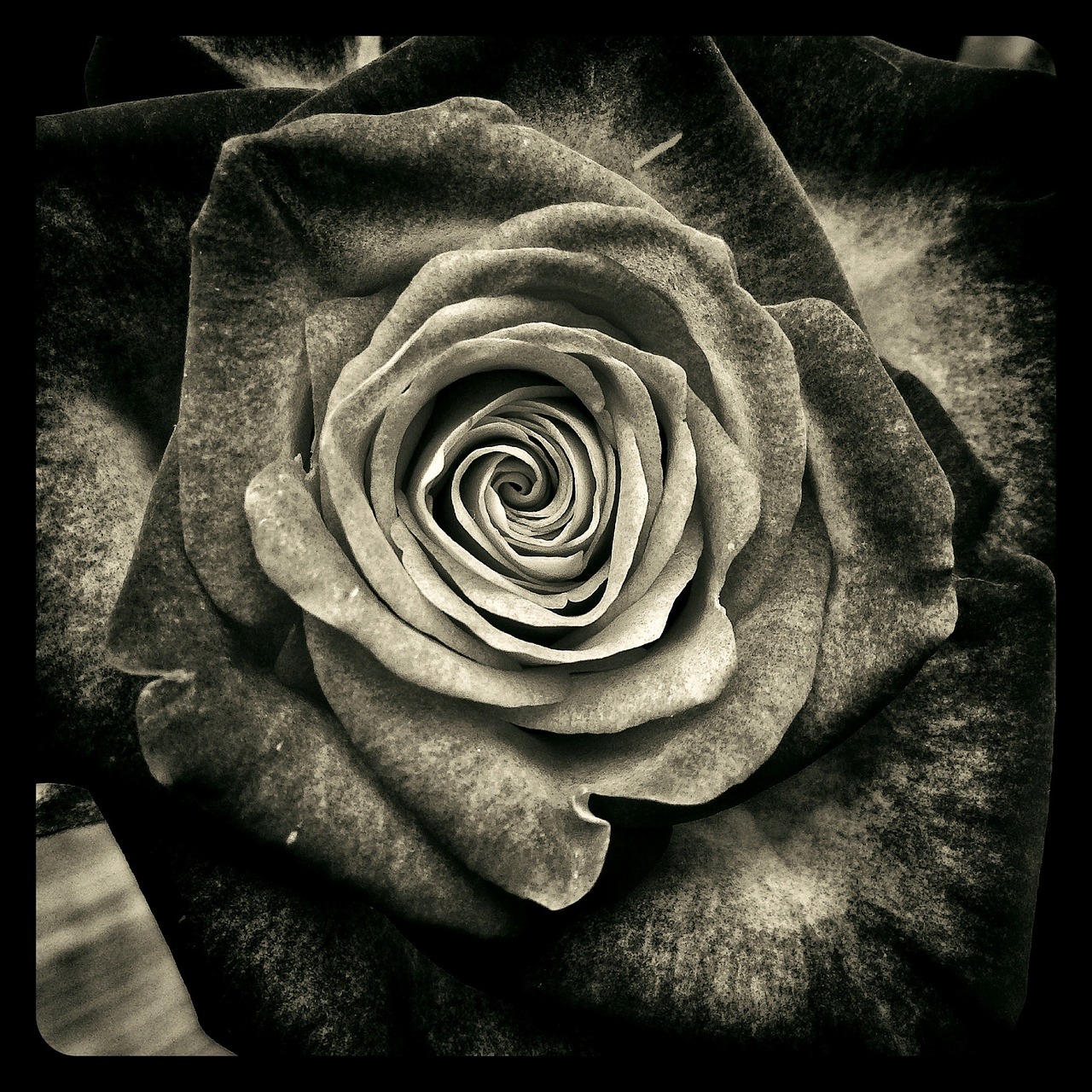
Charcoal and Pencil Techniques
When it comes to creating monochrome art, stand out as two of the most expressive mediums available to artists. Each medium brings its own unique qualities to the table, allowing for a wide range of emotional resonance and artistic expression. Charcoal, with its rich, deep blacks and smooth gradients, can evoke a sense of drama and intensity, while pencil, with its fine lines and delicate shading, can create intricate details and subtle nuances in a piece.
Artists often choose charcoal for its ability to produce bold strokes and dramatic contrasts. The medium is versatile; it can be smudged for softer edges or left sharp for striking lines. One of the most popular techniques with charcoal is the blending method, where artists use their fingers or blending stumps to create soft transitions between light and dark areas. This technique not only enhances the depth of the artwork but also adds a tactile quality that draws viewers in.
On the other hand, pencil techniques offer a different kind of precision and control. Artists can use various hardness levels of pencils to achieve a range of effects. For instance, a softer pencil (like a 6B) can produce rich, dark lines, while a harder pencil (like an H) is perfect for fine details and lighter shades. The ability to layer and build up tones gradually makes pencil a favorite for those who enjoy a meticulous approach to their work.
Moreover, combining both charcoal and pencil can lead to stunning results. By using charcoal for the bold outlines and pencil for the intricate details, artists can create a harmonious balance that captivates the viewer. This dual technique not only showcases the strengths of each medium but also allows for a dynamic interplay of textures that can elevate a piece from ordinary to extraordinary.
Here’s a quick comparison of the two mediums:
| Aspect | Charcoal | Pencil |
|---|---|---|
| Texture | Soft, rich blacks | Fine, precise lines |
| Blending | Excellent for smooth transitions | Limited blending, but great for layering |
| Detailing | Good for bold strokes | Ideal for intricate details |
| Emotional Impact | High drama and intensity | Subtlety and precision |
In conclusion, mastering both opens up a world of creative possibilities for artists. Whether you prefer the bold strokes of charcoal or the delicate lines of pencil, each medium has something unique to offer. The key is to experiment and find the right balance that resonates with your artistic vision.
- What is the best paper to use for charcoal and pencil drawings? It’s best to use textured paper for charcoal to hold the medium well, while smoother paper works great for pencil to achieve fine details.
- Can I combine charcoal and pencil in the same artwork? Absolutely! Many artists find that combining both mediums can enhance the depth and complexity of their work.
- How do I preserve my charcoal and pencil drawings? Use a fixative spray for charcoal to prevent smudging, and store pencil drawings flat to avoid creases or damage.
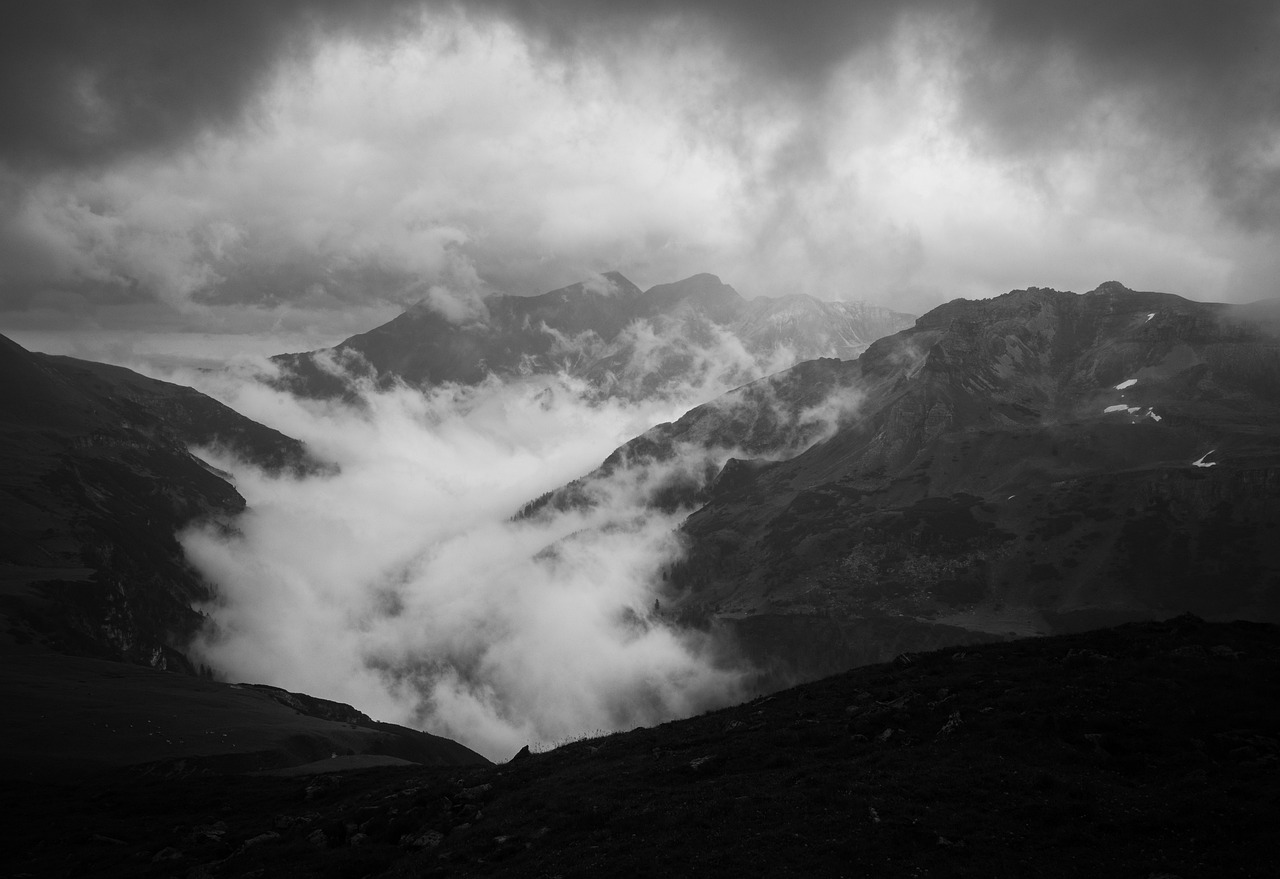
The Role of Contrast in Black and White Art
When it comes to black and white art, contrast is not just a technique; it's the lifeblood that breathes life into monochrome compositions. Imagine walking into a gallery where every piece is drenched in shades of gray, yet your eyes are irresistibly drawn to certain areas. This captivating pull is the result of expertly manipulated contrasts, where the interplay of light and shadow creates a visual dialogue that captivates the viewer. Artists harness this power to evoke emotions, create drama, and guide the viewer's gaze through their work.
At its core, contrast in black and white art serves multiple purposes. It can highlight the focal points of a piece, create a sense of depth, and even evoke a range of emotions from tranquility to tension. Just think about it: a stark black silhouette against a white background can feel both ominous and striking, while soft grays can evoke feelings of nostalgia and calm. The emotional resonance of these contrasts is what makes monochrome art so compelling.
One of the most fascinating aspects of contrast is how it can transform simple images into complex narratives. For instance, consider the following:
| Contrast Type | Description | Emotional Impact |
|---|---|---|
| High Contrast | Sharp differences between dark and light areas | Creates drama and urgency |
| Low Contrast | Subtle variations in shades | Evokes calmness and introspection |
| Textured Contrast | Combines different textures with light and dark | Adds depth and complexity |
As we delve deeper into the elements of contrast, it becomes clear that light and shadow play a pivotal role. Artists often use these elements to guide the viewer's eye, leading them through a narrative that unfolds within the artwork. For instance, a well-placed shadow can draw attention to a particular detail, making it stand out in a sea of gray. This interplay not only enhances the visual interest but also evokes specific emotions, drawing the viewer into the artist's world.
Furthermore, the use of texture adds another layer to the contrast in black and white art. Artists employ various techniques to create texture, which can significantly affect the perception of depth in their work. For example, an artist might use rough strokes in one area to convey chaos, while employing smooth, flowing lines in another to evoke serenity. This juxtaposition of textures creates a rich tapestry that invites viewers to explore the artwork more intimately, almost as if they can feel the emotions embedded within each stroke.
In conclusion, the role of contrast in black and white art is multifaceted and essential. It not only enhances visual appeal but also deepens emotional engagement, making monochrome art a powerful medium for expression. Whether through the dramatic interplay of light and shadow or the intricate dance of textures, contrast remains a vital tool for artists seeking to convey their vision. So the next time you find yourself mesmerized by a black and white piece, take a moment to appreciate the contrasts at play—they're the secret ingredients that transform simple images into profound experiences.
- What is the importance of contrast in black and white art? Contrast is crucial as it enhances visual interest and emotional impact, guiding the viewer's eye and evoking specific feelings.
- How do artists create contrast in their work? Artists manipulate light, shadow, and texture to create varying degrees of contrast, which can dramatically affect the perception and mood of the artwork.
- Can contrast be used in other forms of art? Absolutely! Contrast is a fundamental principle in all forms of visual art, including color art, photography, and graphic design.

Light and Shadow Play
When it comes to black and white art, one of the most fascinating aspects is the intricate dance between light and shadow. This interplay is not just a technical element; it's a powerful tool that artists wield to evoke emotion and guide the viewer's experience. Imagine walking into a room filled with paintings where the shadows seem to breathe and the light sparkles with life. It’s almost as if the artwork is whispering secrets to you, drawing you closer to uncover the stories hidden within.
Artists have long understood that contrast is the heartbeat of monochrome art. By manipulating light and shadow, they create a dramatic tension that captivates the viewer. Think about it: when you look at a piece of art, what captures your attention first? Often, it’s those stark contrasts that make the elements pop, pulling you into the narrative the artist is telling. The shadows can evoke feelings of mystery or melancholy, while the light can symbolize hope or clarity. This emotional tug-of-war is what makes black and white art so compelling.
To master the art of light and shadow, artists often employ several techniques:
- Chiaroscuro: This technique involves the use of strong contrasts between light and dark to give the illusion of volume in modeling three-dimensional objects and figures.
- Tenebrism: An extreme form of chiaroscuro, tenebrism uses large areas of dark contrasting sharply with smaller illuminated sections, creating a dramatic effect.
- Cross-lighting: Utilizing multiple light sources from different angles can create complex shadows that add depth and intrigue to the composition.
Each of these methods allows artists to play with the viewer's perception, guiding their gaze to specific areas of the artwork. For instance, in a portrait, the artist might illuminate the subject's face while allowing the background to fade into shadow, thereby emphasizing the emotional expression of the subject. By doing this, the viewer is not just seeing a face; they are experiencing the depth of feeling captured in that moment.
Moreover, the texture created by the interplay of light and shadow can add an additional layer of richness to the artwork. Artists often use techniques such as hatching and cross-hatching to build up layers of shadow, creating a tactile quality that invites the viewer to reach out and touch the piece. This textural contrast can enhance the overall impact of the artwork, making it a feast for the eyes.
As we explore the world of black and white art, it becomes clear that light and shadow are not mere components; they are the very essence of the storytelling process. They shape our emotional response and deepen our understanding of the artwork. So, the next time you find yourself in front of a monochrome piece, take a moment to appreciate the delicate balance of light and shadow at play. It’s in this balance that the true magic of black and white art lies.
Q: Why is contrast important in black and white art?
A: Contrast is essential because it creates visual interest and drama. It helps to define shapes, guide the viewer's eye, and evoke emotions.
Q: What techniques can artists use to manipulate light and shadow?
A: Artists can use various techniques such as chiaroscuro, tenebrism, and cross-lighting to create depth and drama in their work.
Q: How does texture affect the perception of black and white art?
A: Texture adds a tactile quality and can enhance the emotional resonance of the artwork, making it more engaging for the viewer.
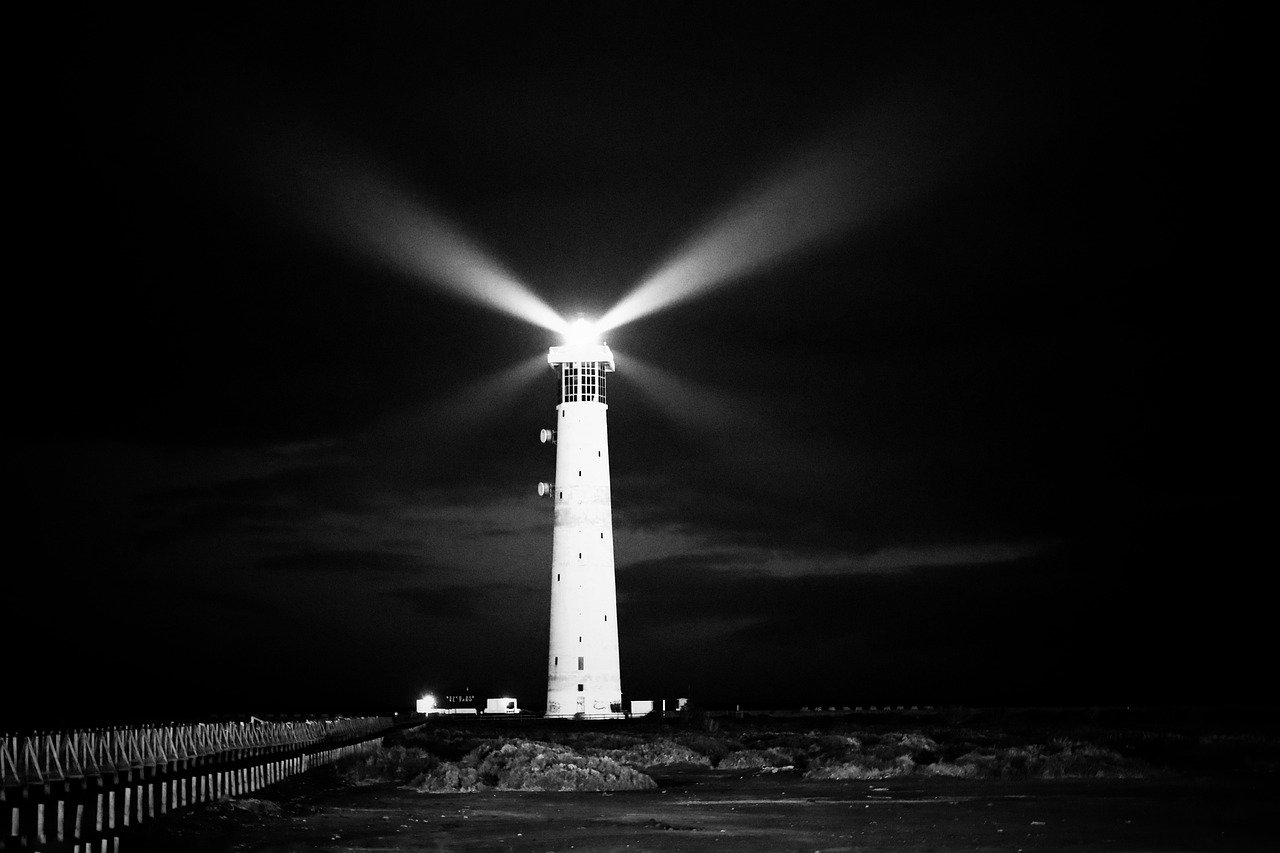
Texture and Depth
The allure of black and white art often lies in its ability to convey texture and depth through the careful manipulation of contrasts. Unlike color art, where hues can distract and dominate, monochrome artistry invites the viewer to focus on the intricacies of form and light. Artists employ various techniques to achieve a sense of three-dimensionality, making their works not only visually striking but also emotionally resonant.
One of the primary ways artists create texture in black and white art is through the use of different mediums. For example, charcoal has a unique ability to produce rich, velvety blacks that can evoke a sense of depth and shadow. When applied with varying pressure, artists can create smooth gradients or rough, textured surfaces that draw the viewer in. Similarly, pencil can be used for fine details, allowing for a delicate touch that contrasts beautifully with the bold strokes of charcoal or ink.
In addition to the choice of medium, the technique employed plays a crucial role in achieving depth. Artists often use layering techniques to build up textures gradually. By applying multiple layers of ink or charcoal, they can create a rich tapestry of tones that gives the illusion of depth. This method not only enhances the visual appeal but also adds an emotional layer to the artwork, inviting viewers to explore the nuances and complexities of the piece.
Moreover, the interplay of light and shadow is fundamental in creating texture and depth. Artists strategically place highlights and shadows to guide the viewer's eye, leading them through the composition. This technique can transform a flat image into a dynamic experience, where the viewer can almost feel the contours and surfaces represented on the canvas. For instance, a well-placed shadow can suggest the curvature of a surface, while a highlight can bring an object to life, making it appear to leap off the page.
To illustrate the importance of texture and depth in black and white art, consider the following table that outlines common techniques and their effects:
| Technique | Effect |
|---|---|
| Cross-Hatching | Creates intricate textures and depth through overlapping lines. |
| Stippling | Uses dots to build up tones and textures, giving a soft, detailed appearance. |
| Blending | Softens transitions between light and dark areas, enhancing depth. |
| Scratching | Removes layers of medium to create highlights and add texture. |
In conclusion, the mastery of texture and depth in black and white art is not just about technical skill; it’s about understanding how to evoke emotion and create a dialogue between the artwork and the viewer. Whether through the bold strokes of charcoal or the delicate lines of ink, artists have the remarkable ability to transform simple black and white into a world of complexity and feeling.
- What is the significance of black and white art?
Black and white art emphasizes contrast and form, allowing for a deeper exploration of texture and emotion without the distraction of color. - Which mediums are best for creating texture in black and white art?
Charcoal, ink, and pencil are popular choices for their unique qualities in creating depth and texture. - How can I improve my skills in black and white art?
Practice different techniques, study the works of master artists, and experiment with various mediums to find your unique style.
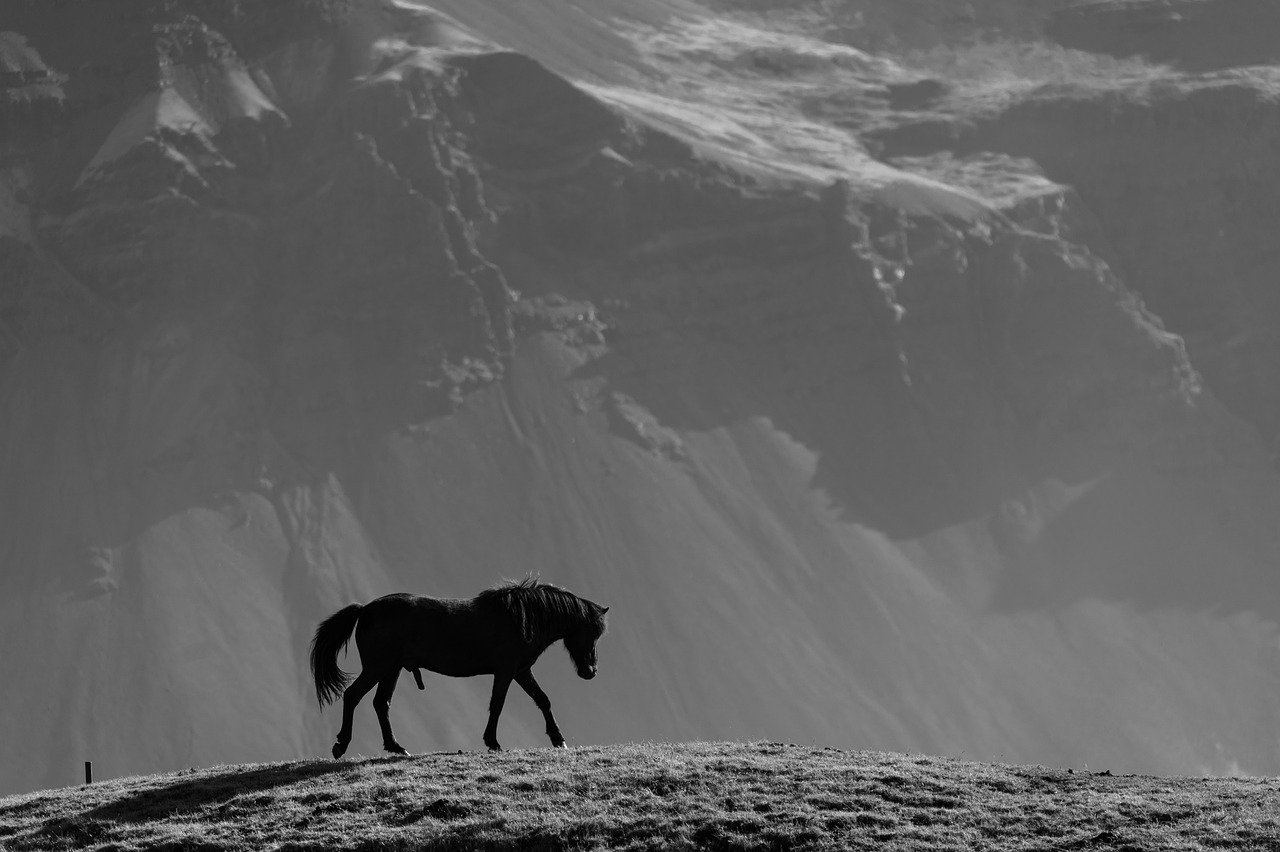
Influence of Black and White Art on Modern Culture
The influence of black and white art on modern culture is both profound and multifaceted. In an age dominated by vibrant colors and digital imagery, the timeless elegance of monochrome continues to captivate artists, designers, and audiences alike. The stark contrast and simplicity of black and white art evoke a sense of nostalgia, often reminding us of the past while simultaneously challenging contemporary artistic expressions. This duality is what makes black and white art not just relevant but essential in today’s cultural landscape.
One of the most significant areas where black and white art has made its mark is in photography. Renowned photographers like Ansel Adams and Henri Cartier-Bresson have demonstrated how the absence of color can enhance the emotional weight of an image. Black and white photography strips away distractions, allowing viewers to focus on composition, light, and shadow. This technique has seen a resurgence, especially in the realm of social media, where artists are embracing the raw, unfiltered aesthetic that monochrome provides.
Moreover, in graphic design, black and white palettes are often employed to convey sophistication and clarity. Brands frequently utilize monochrome designs in their logos and marketing materials to create a strong visual identity. The simplicity of black and white can evoke feelings of elegance and professionalism, making it a popular choice for luxury brands. For example, consider the minimalist logos of companies like Chanel or Apple, which rely heavily on black and white to communicate their brand ethos.
In the world of fashion, black and white art has influenced trends and styles for decades. From classic black-and-white films that shaped the fashion industry to modern runway shows that feature monochrome collections, this palette remains a staple. Designers often use black and white to create striking contrasts in their collections, allowing textures and fabrics to take center stage. The enduring appeal of black and white fashion is evident in its ability to transcend seasons and trends, making it a timeless choice for fashionistas around the globe.
Furthermore, the digital age has given rise to new forms of black and white art, particularly in digital manipulation. Artists are now able to create stunning monochrome pieces using software that allows for intricate detailing and layering. This evolution has expanded the boundaries of traditional black and white art, making it accessible to a wider audience. The fusion of technology and artistry has led to innovative works that challenge our perceptions of monochrome, proving that even in a world filled with color, black and white remains a powerful medium for expression.
In summary, the influence of black and white art on modern culture is undeniable. It serves as a reminder of the beauty found in simplicity and the emotional depth that can be achieved without the distraction of color. As we continue to navigate through an increasingly colorful world, the elegance of black and white art will undoubtedly remain a cherished and vital element of our cultural narrative.
- Why is black and white art still relevant today? Black and white art transcends trends and offers a timeless aesthetic that emphasizes form, texture, and emotional depth.
- How has technology impacted black and white art? Technology has allowed artists to explore new techniques in digital manipulation, expanding the possibilities of monochrome artistry.
- Who are some famous black and white photographers? Notable photographers include Ansel Adams, Henri Cartier-Bresson, and Dorothea Lange, each of whom has made significant contributions to the field.
- What role does contrast play in black and white art? Contrast is crucial as it helps create drama, mood, and visual interest, guiding the viewer's eye and enhancing the emotional resonance of the artwork.
Frequently Asked Questions
- What is black and white art?
Black and white art refers to artistic expressions that utilize only shades of black, white, and gray. This style emphasizes contrast, texture, and form, allowing artists to convey emotions and narratives without the distraction of color.
- How has black and white art evolved over time?
Black and white art has a rich history, starting from ancient cave paintings and evolving through various artistic movements. Over the centuries, artists have embraced monochrome techniques, from traditional ink and charcoal methods to contemporary digital art, showcasing its versatility and timeless appeal.
- What techniques are commonly used in black and white art?
Artists employ various techniques in black and white art, including ink drawing, charcoal sketching, and digital manipulation. Each method offers unique textures and emotional depth, allowing artists to create striking compositions that resonate with viewers.
- Why is contrast important in black and white art?
Contrast plays a vital role in black and white art as it helps to create drama and visual interest. By manipulating light and shadow, artists can guide the viewer's eye and evoke specific emotions, making the artwork more impactful.
- Can you explain the role of texture in monochrome art?
Texture adds depth and richness to monochrome art. Artists use various techniques to achieve a sense of three-dimensionality, making the artwork more engaging. This can involve varying the pressure of strokes or combining different materials to enhance the visual experience.
- How does black and white art influence modern culture?
Black and white art continues to influence modern culture through photography, graphic design, and fashion. Its enduring appeal lies in its ability to convey timeless elegance and emotional depth, making it relevant in various contemporary artistic expressions.



















